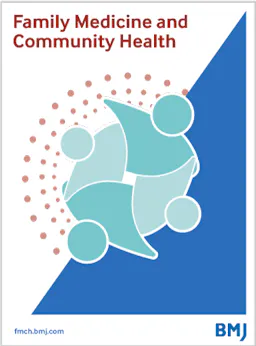Changes in family situation and concurrent changes in working life: a 15-year longitudinal analysis
IF 4.3
3区 医学
Q1 PRIMARY HEALTH CARE
引用次数: 0
Abstract
Objective Currently, little is known regarding changes in family situation with concurrent changes in working life. This study aimed to examine whether changes in family situation (based on living with children and/or marrying/divorcing) were associated with changes in working life and whether the associations were influenced by sex, genetics and early life environment. Design Prospective cohort study. Setting and participants Data from Swedish national registers of 16 410 twins were used. Fixed-effects logistic regression models assessing ORs with 95% CIs were applied to examine associations between changes in family situation and working life controlling for time-invariant effects and adjusted for covariates, and conditional models to account for confounding of genetics and early life environment. Results Changes in individuals life situation from being single and living without children to married and living with children were associated with transitioning from unsustainable (ie, having unemployment or sickness absence/disability pension) to sustainable working life (men: OR 2.40, 95% CI 2.26 to 2.56; women: OR 1.68, 95% CI 1.59 to 1.78). Changes from being married to single, in contrast, attenuated the likelihood of transitioning to a sustainable working life. Moreover, changes in men’s working life seem to be more dependent on changes in family situation compared with women. Genetic factors and early life environment play a role in the associations. Conclusions Family formation increases the likelihood of a more stable working life whereas divorce is a risk factor for work interruptions. Our study emphasises that family formation improves the work life situation and to a higher degree for men. Data may be obtained from a third party and are not publicly available.家庭状况的变化与职业生活的同步变化:15 年纵向分析
目标 目前,人们对家庭状况的变化与职业生活的同步变化知之甚少。本研究旨在探讨家庭状况的变化(基于与子女共同生活和/或结婚/离婚)是否与工作生活的变化相关,以及这种关联是否受性别、遗传和早期生活环境的影响。设计 前瞻性队列研究。研究地点和参与者 使用瑞典全国 16 410 对双胞胎的登记数据。采用固定效应逻辑回归模型评估ORs和95% CIs,以检验家庭状况变化与工作生活之间的关联,该模型控制了时间不变效应并调整了协变量,而条件模型则考虑了遗传学和早期生活环境的混杂因素。结果 个人生活状况从单身和无子女生活到已婚和有子女生活的变化与从不可持续(即失业或因病缺勤/残疾抚恤金)过渡到可持续工作生活有关(男性:OR 2.40,95% CI 2.26 至 2.56;女性:OR 1.68,95% CI 1.59 至 1.78)。相反,从已婚到单身的变化则降低了过渡到可持续职业生活的可能性。此外,与女性相比,男性职业生活的变化似乎更依赖于家庭状况的变化。遗传因素和早期生活环境在这些关联中发挥了作用。结论 家庭的组建增加了工作生活更加稳定的可能性,而离婚则是工作中断的一个风险因素。我们的研究强调,组建家庭能改善工作生活状况,而且男性的改善程度更高。数据可能来自第三方,不对外公开。
本文章由计算机程序翻译,如有差异,请以英文原文为准。
求助全文
约1分钟内获得全文
求助全文
来源期刊

Family Medicine and Community Health
PRIMARY HEALTH CARE-
CiteScore
9.70
自引率
0.00%
发文量
27
审稿时长
19 weeks
期刊介绍:
Family Medicine and Community Health (FMCH) is a peer-reviewed, open-access journal focusing on the topics of family medicine, general practice and community health. FMCH strives to be a leading international journal that promotes ‘Health Care for All’ through disseminating novel knowledge and best practices in primary care, family medicine, and community health. FMCH publishes original research, review, methodology, commentary, reflection, and case-study from the lens of population health. FMCH’s Asian Focus section features reports of family medicine development in the Asia-pacific region. FMCH aims to be an exemplary forum for the timely communication of medical knowledge and skills with the goal of promoting improved health care through the practice of family and community-based medicine globally. FMCH aims to serve a diverse audience including researchers, educators, policymakers and leaders of family medicine and community health. We also aim to provide content relevant for researchers working on population health, epidemiology, public policy, disease control and management, preventative medicine and disease burden. FMCH does not impose any article processing charges (APC) or submission charges.
 求助内容:
求助内容: 应助结果提醒方式:
应助结果提醒方式:


